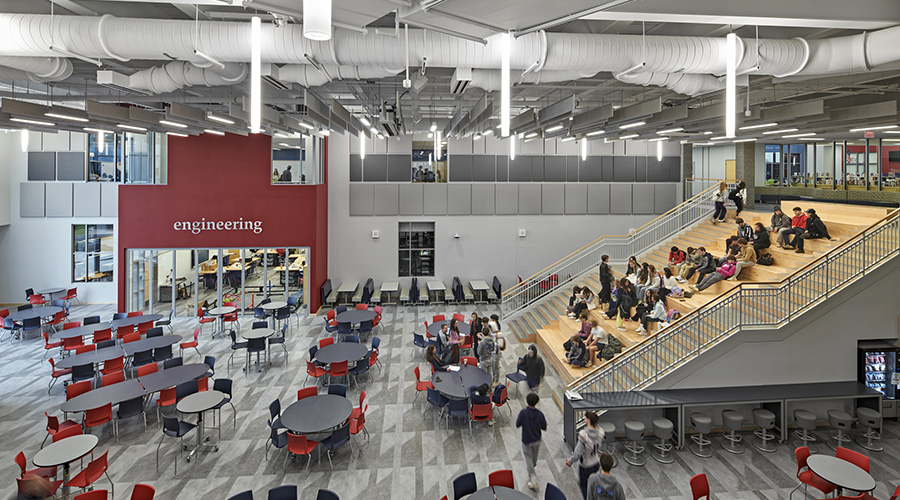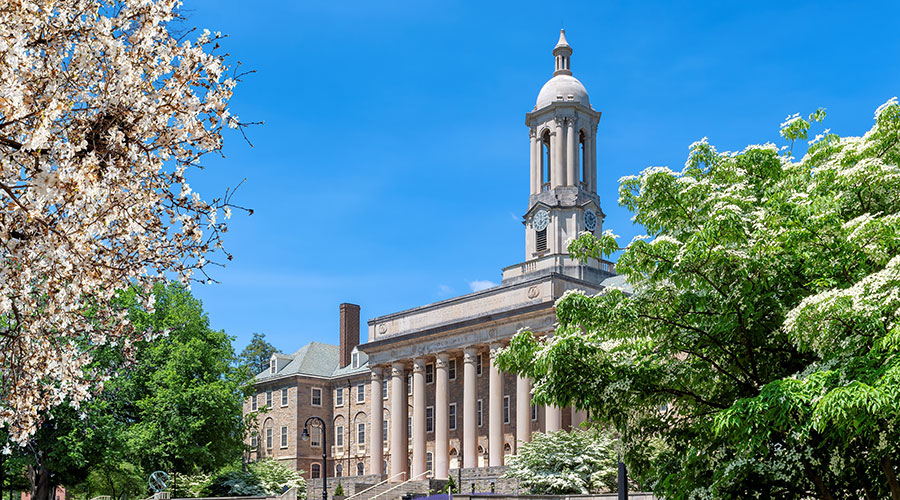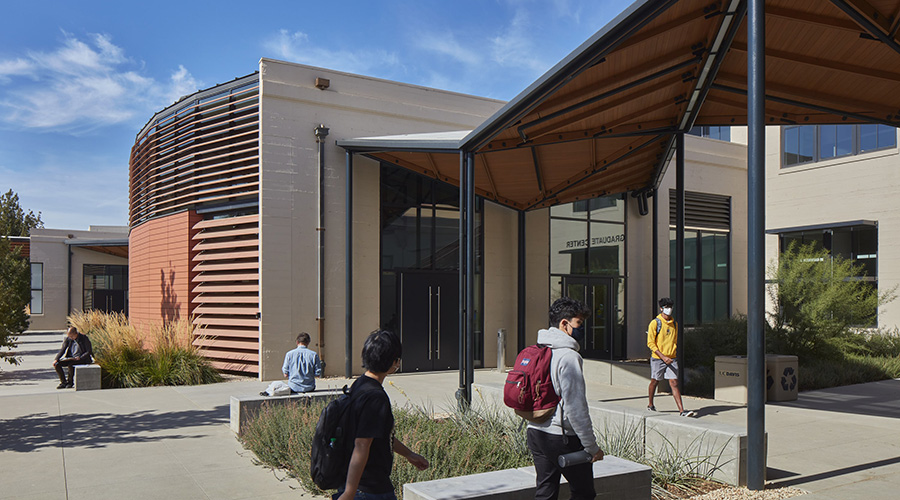 Photo credit: Richard Barnes
Photo credit: Richard BarnesVacant, Unsafe Facility Transforms into Net Zero Classrooms
Adaptive reuse project at UC Davis features collaborative spaces, high-tech classrooms and energy-efficiency
Walker Hall at the UC Davis campus is an adaptive reuse project that transformed a vacant, seismically unsafe building into a graduate and professional student center with meeting rooms, a lecture hall, and sophisticated active-learning classrooms that serve the entire campus. It coalesces history, community, and advanced educational environments at a hub of university life.
The original 32,400-square-foot building was built in 1927 and was one of the earliest buildings on campus, built to house the university’s agricultural engineering program. A north-facing, two-story Spanish style wing housed classrooms and offices, while to the south, three lofty, clear-span wings served as large shops for hands-on research, design, and fabrication of farming machinery.
Leddy Maytum Stacy Architects shortened the three southern wings to allow for a new campus walkway and repurposed the three shop wings as a two-hundred-seat lecture hall and two large general assignment classrooms. These spaces are flexible active-learning environments that incorporate sophisticated media and digital technologies. In this way, the former machine shops now offer a new kind of toolbox that supports contemporary action-based learning.
The project retained existing steel trusses, concrete columns, and finishes and inserted modern facades within the original shells. The interior opens to the campus through heavily shaded windows. Classrooms were designed to maximize flexibility, simplicity, and access to interactive media technologies, while leaving space for future evolution in preferred teaching modalities.
Walker Hall was seismically retrofitted with energy-efficient systems and the project is on track to receive LEED Platinum certification.
The revitalized building is an important addition to the university’s graduate and postgraduate programs, which account for 20 percent of the total student body. It supports graduate students’ academic, professional, and personal well-being with rooms for mentoring and advising as well as financial and mental health counselling.
Historical details
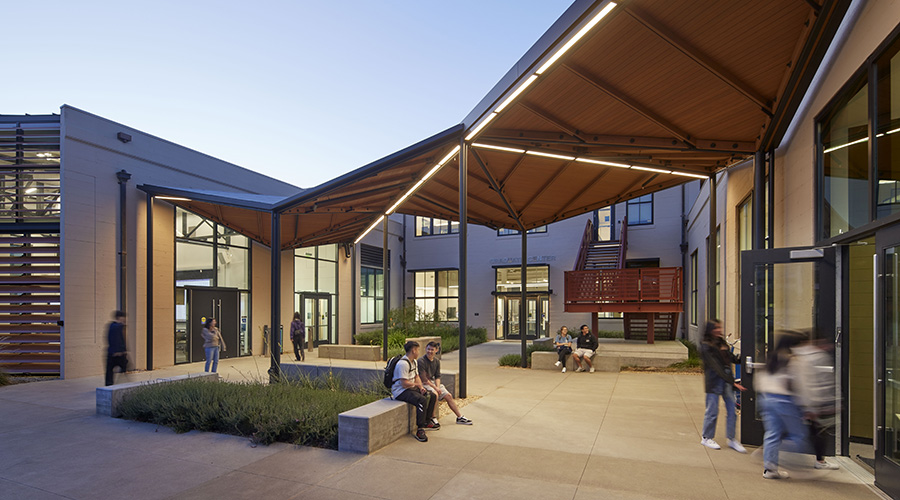
New exterior details such as steel sunshades, cylindrical daylight collectors, a sculptural steel stair, and geometrically folded shade canopies reflect the industrial history of the building. (Photo credit: Bruce Damonte)
Net zero energy
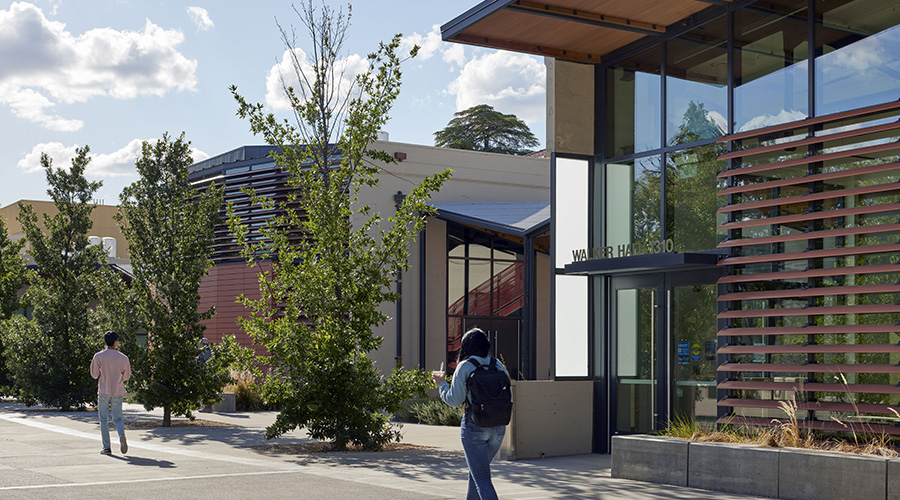
New thermal insulation and high-efficiency building systems, combined with dedicated renewable energy provided by an on-campus solar farm will result in a zero net electricity building. (Photo credit: Bruce Damonte)
Communal, collaborative spaces
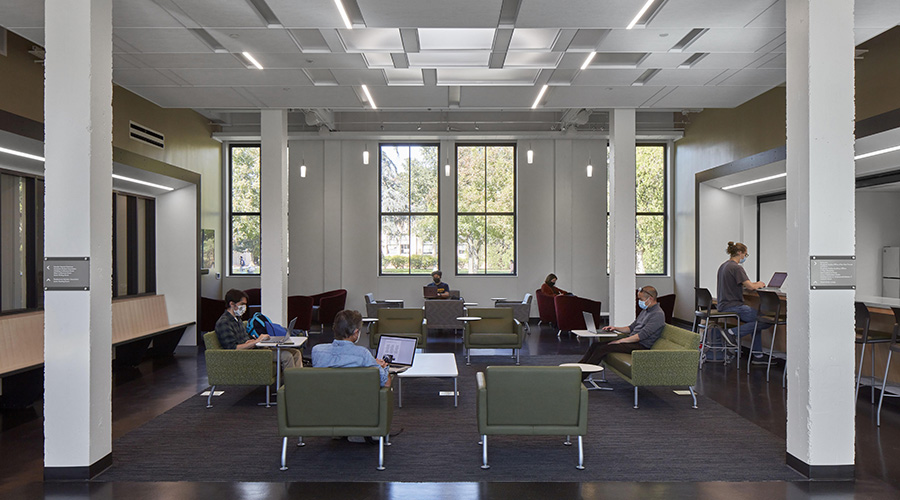
A variety of social, meeting, and study spaces foster collaborative, interdisciplinary discourse and help students build a strong scholarly community. The two-story north wing houses a graduate student lounge, counselling rooms, studies, multipurpose meeting spaces, and administrative offices. (Photo credit: Richard Barnes)
High-tech, flexible furniture
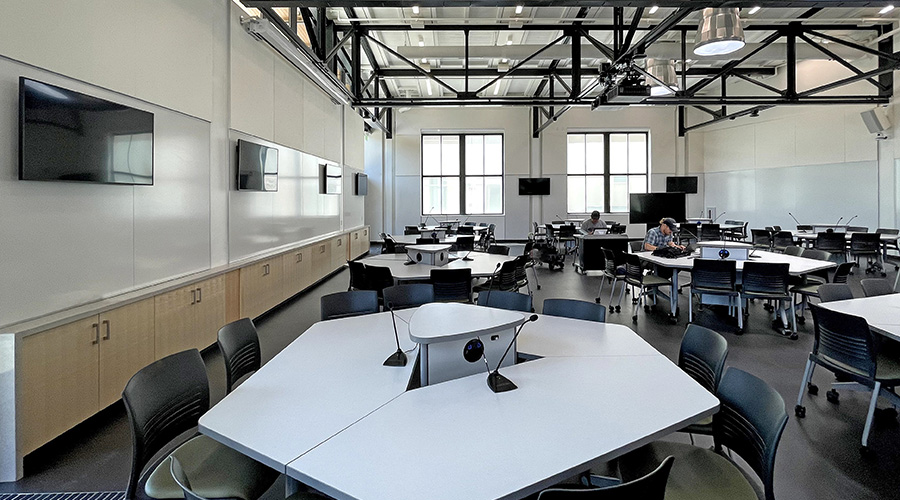
Flexible 9-seat tables cluster around central technology hubs, allowing students to plug in their devices and work as individuals or networked teams of various sizes. Each table has a dedicated flat screen display mounted on a nearby wall, along with ample white board space surrounding it to display real-time learning outcomes. The wheeled tables can be easily rearranged or completely removed depending upon need. (Photo credit: Jeff Marsch)
Related Topics:














